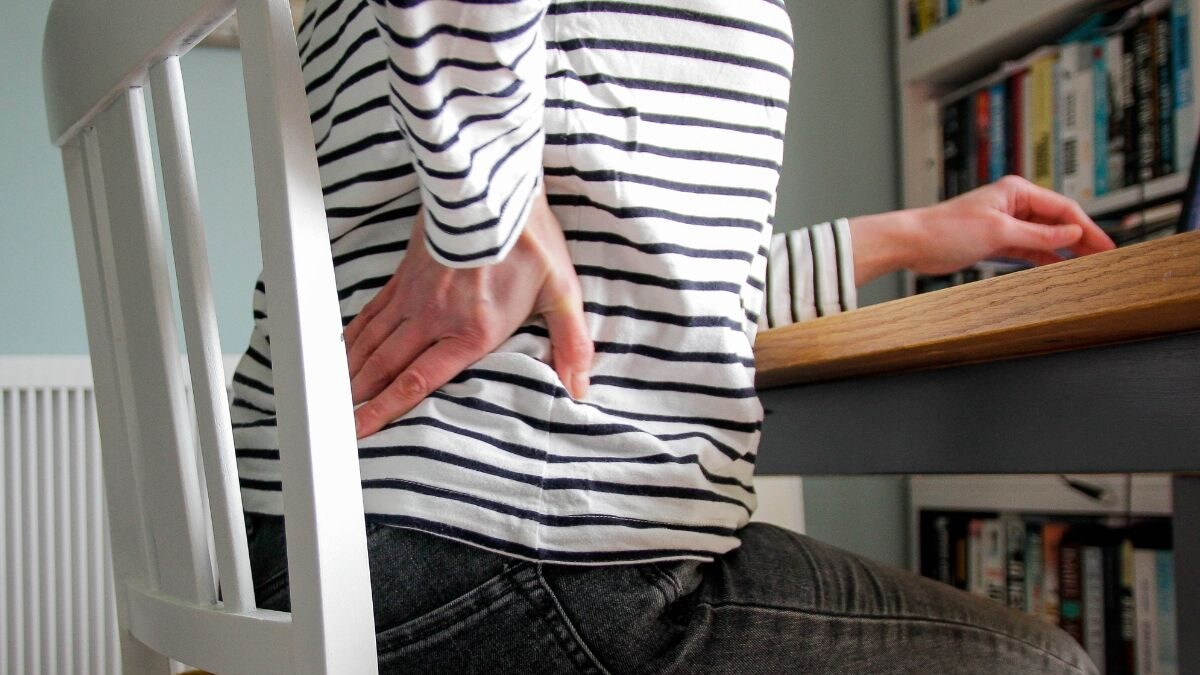Ankylosing Spondylitis is a painful condition that manifests first as stiffness in the lower back. ‘Ankylosing’ refers to fused bones and ‘spondylitis’ is inflammation in the vertebrae in the spine. Ankylosing Spondylitis (AS) is, therefore, an inflammatory disease that can cause the vertebrae to fuse together, making the spine stiff and the posture hunched.
When the disease affects the joints of the rib cage, it prevents full expansion of the chest when breathing. It can also can affect other joints, including shoulders, hips and knees.
Ankylosing Spondylitis has no cure, which renders it a lifelong disease. The pain is not relieved by rest and is usually treated with steroids and NSAIDS. However, patients do well with mild, loosening exercises that help joint mobility.
Yoga interventions have helped with improving spinal flexibility in people with AS. Within Yoga, go easy on the twists and bends, choosing milder and basic exercises. Prefer regularity in practice, rather than any rigorous Yoga practice. Always combine and coordinate breathing into the poses. Ease pain using relaxation techniques.
Here are four Yoga practices that help to ease pain and stiffness in Ankylosing Spondylitis, and also address chest expansion.
HANDS-IN-AND-OUT BREATHING
A good exercise to begin the session with as it gets the heart going. It helps with expanding the chest, increasing lung capacity, and aids in reducing back pain.
– Stand straight with legs one-foot apart and hands by the side
– Extend the arms in front of the chest, palms touching each other.
– Inhale, as you extend the arms sideways
– Exhaling, bring back the palms to touch each other in front.
– Do 8-10 rounds of this exercise.
Checkpoints:
a) Arms must remain parallel to the ground.
b) The back must remain straight but not tilted backward.
c) Arms must be straight, but relaxed and not stiff.
TADASANA OR PALM TREE POSE (Two Variations)
Stretches the entire spine, expands the chest, strengthens lower back and thigh muscles, and helps improve posture.
– Stand straight, with feet one-foot apart and arms by the side of the body.
– Inhaling, raise your arms from the front – palms facing each other – to go above your head. Stretch up as much as you can.
– Turn the palms outward and – while exhaling – bring them back sideways to the original position.
– Relax for a few seconds and begin the next round. Do four rounds of this variation.
For the second variation:
– While inhaling, take the arms upwards sideways, palms facing upwards and touching each other to form a `Namaste’ above the head.
– Exhaling, turn the palms and bring the arms down to their resting position at the sides.
Checkpoints:
a) Arms must be straight, but relaxed and not stiff.
b) Arms must be in line with the body when they go up – not at an angle.
c) Palms must be reversed before bringing down.
d) Pause between rounds.
BHUJANGASANA OR COBRA POSE
Serves the cause of expanding the chest. Gently eases vertebra after vertebra in the spine, allowing for its expansion. Pressure felt on the lower back helps activate and stimulate nerves and muscles in that area. This pressure change also allows for – over a period of time – lubrication between vertebrae.
– Lie down on your stomach, hands bent at the elbows, palms near the shoulders and facing downward.
– Inhaling, raise the head and neck upwards to look at the ceiling.
– Stay there for a few seconds; then, exhaling, bring your body, neck and head back to the floor.
– Relax for a few seconds in Makarasana (Crocodile pose) with palms on top of each other making a pillow for the head.
– Do five rounds.
Checkpoints:
a) Ensure that the abdomen below the navel does not get lifted.
b) The arms must not be taut in the final position.
c) arms must not take the weight of the body; the pressure is to be distributed along the back and felt in the lower back.
SPINAL TWIST LYING-DOWN
Another chest opener and spine-movement enhancer. It aids ease of movement between vertebral discs, stimulates muscles along the spine and increases circulation in that area.
– Lie down on your back; bend the knees, knees pointing up and soles of the feet on the floor. Place your palms under the head.
– Inhale.
– Exhaling, drop both legs to the right side – knee upon knee – till they touch the floor. Simultaneously, move the head and neck in the opposite direction.
– Inhaling come back to the centre; again, exhaling, drop the legs to the left side this time, while turning the head and neck to the right.
– Return to the starting position while inhaling.
– This is one round. Do five rounds.
Checkpoints:
a) There should be no force or pressure anywhere along the back.
b) Movements should be gentle to avoid getting a `catch’ in the back.
c) As both knees touch the ground, they would naturally come apart at an angle; do not try to force them to remain together.
ANY CONSCIOUS RELAXATION TECHNIQUE FOR PAIN RELIEF
This helps improve pain sensitivity and pain tolerance.
Relaxation works best after exercise. Practise Deep Relaxation Technique https://www.news18.com/lifestyle/yogmantra-when-painkillers-wouldnt-work-but-a-relaxation-technique-did-8841689.html at the end of your session. It can also be used independently, at any time of the day, or before sleeping at night.
(NOTE: This article is meant for information purposes. Do learn practices from a trained Yoga teacher or at a Yoga school. Do check with your physician before beginning Yoga. Know your capacity, and never exceed it.)
The author is a journalist, cancer survivor and certified yoga teacher. She can be reached at [email protected].

Hemalata Nehete celebrates the art of living well, exploring topics ranging from travel and fashion to home decor and culinary delights, offering inspiration for readers seeking a balanced and enjoyable lifestyle.


